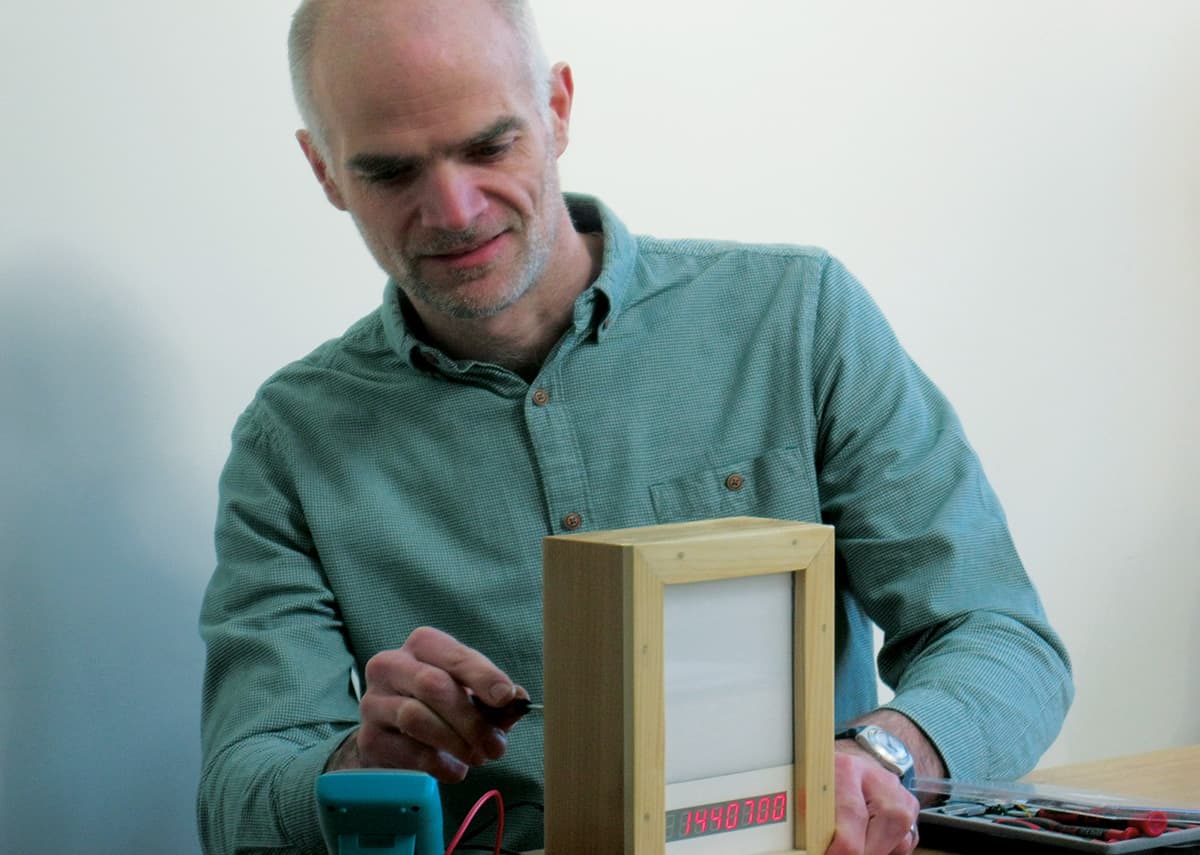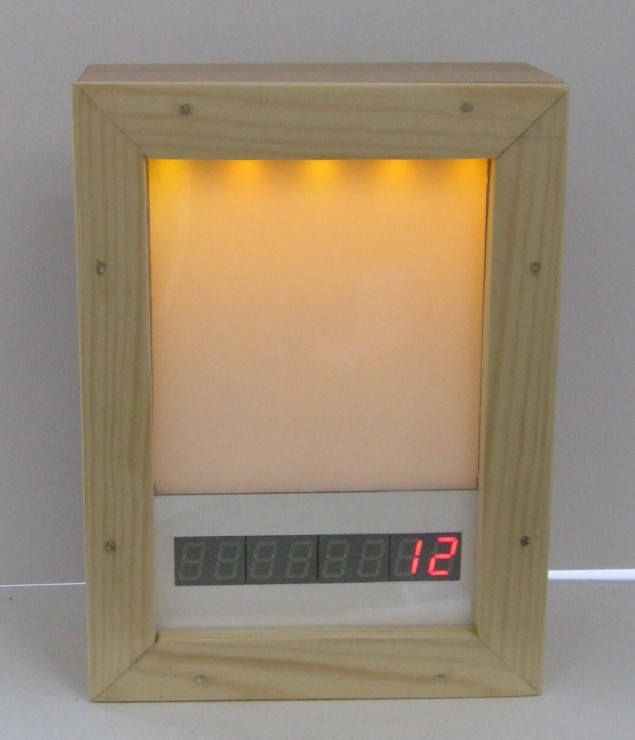Andrew Ferguson is a device physicist in Cambridge, UK. This post is part of a series on how the COVID-19 pandemic is affecting the personal and professional lives of physicists around the world. If you’d like to share your own perspective, please contact us at pwld@ioppublishing.org.

Primary-school children, and the rest of us too, are continuously being showered by unseen muons, a heavier relative of the more familiar electron. These muons are created when energetic cosmic rays, including protons and alpha particles, hit our atmosphere and produce a shower of particles as they slow down. At sea level, muons arrive at a rate of about one per square centi-metre per minute.
Muons remain unnoticed unless you have the right equipment to look for them. Several years ago I was therefore excited to read about a successful US-based outreach project called Cosmic Watch. Started by particle physicists, it allows members of the public to make muon detectors for less than $100 and observe these tiny particles for themselves. At the heart of the detector is a silicon photomultiplier chip, which measures the few blue photons emitted by a plastic scintillator whenever a muon passes through.
Inspired, I started to build muon detectors based on the Cosmic Watch design. But when I had got one working, I needed something to do with it. A work trip to Belgium on the Eurostar train presented one such opportunity. I took the detector with me (curiously, no questions were asked at security) and, sure enough, as we travelled through the Channel Tunnel between Britain and France, it recorded a lower rate of muons than at sea level. The sea and seabed were shielding the detector.

As fun as that was, muonic measurements are better shared. So, along with another physicist parent, Lisa Ibberson, I got in touch with Kate Cooke, who teaches science at Coton Church of England Primary School in Cambridgeshire, where my son attends. Together, the three of us applied for money from the Institute of Physics School Grants Scheme. Our idea was to work with pupils to teach them about muons, get them to design a muon detector and finally install it in the school.
In July 2019 we were delighted to hear that our grant was successful and the real work began. We held an initial assembly at school that October using a water pistol and a few slides to introduce ourselves and muons. With the pupils in years 3 and 4 (ages 7–9), we drew pictures of the cascading particles resulting from a cosmic-ray air shower. Meanwhile, the children in years 4 and 5 (ages 8–10) were in charge of how the detector looked.
Together we decided that it should have a muon counter and a display that flashed different colours, depending on the muon’s energy. We jointly defined various parameters of the display, including its size, the colours of the flashes and the number of digits on the counter. Finally, we talked with year-6 pupils about the data the detector would produce, with the help of some edible Smartie bar graphs of course. And behind the scenes we were busy ordering printed circuit boards, soldering components and programming microcontrollers.
In January 2020 we returned to the year 4/5 class with a red flashing prototype encased in a shoe box. We got some great feedback. The colour red was no good – it was too much like a warning light and too bright. We therefore dimmed the display and democratically chose blue, green and amber for the colours. The pupils also told us we needed a switch to turn off the display when the flashing got too distracting. Finally, we decided to have eight digits in the detector so it could count to 99,999,999 muons – over roughly the time pupils spend in school (at a count every two seconds we were expecting about 15 million counts per year).

Unfortunately, when the pandemic struck we couldn’t continue to work directly with the children. Instead, over the summer I worked at home, quietly improving the detector’s electronics. In fact, on walks through the village where I live, people would often ask me what had happened to the muon project. I’d tell them we’d get back to it when we can and fortunately, by September 2020, schools re-opened and we started to think about the final switch-on.
Originally we envisaged a school assembly with a rowdy group countdown to the detector being turned on. We couldn’t do that with social-distancing measures in place, so instead planned a virtual switch-on for December 2020 with pupils from years 4 to 6 in their classrooms, Cooke at school, and me and Ibberson joining from our homes. And so, after revving the pupils up with a quiz to remind them about muons, we turned the device on.

How we can widen career aspirations for the next generation
It worked, phew! We then spent a few minutes watching the detector count up to 60, before opening the floor to questions. And, wow, what great questions they asked. How can a muon travel through 10 metres of concrete? Why do they decay into electrons? If the detector had a bigger area, would it count more muons? Has a detector like this ever been made before? Where do the cosmic rays that generate the muons come from?
Overall, the project was a great success. We had wonderful engagement from the pupils, who had contributed to the design of a fun scientific instrument. In fact, the switch-on of the detector, though virtual, was every bit as exciting as if it had happened in school. Looking to the future, we hope that this strange machine from a strange year counts up to 99,999,999 many times over its lifetime – and that it continues to provoke curiosity from primary-school pupils in Coton for years to come.



